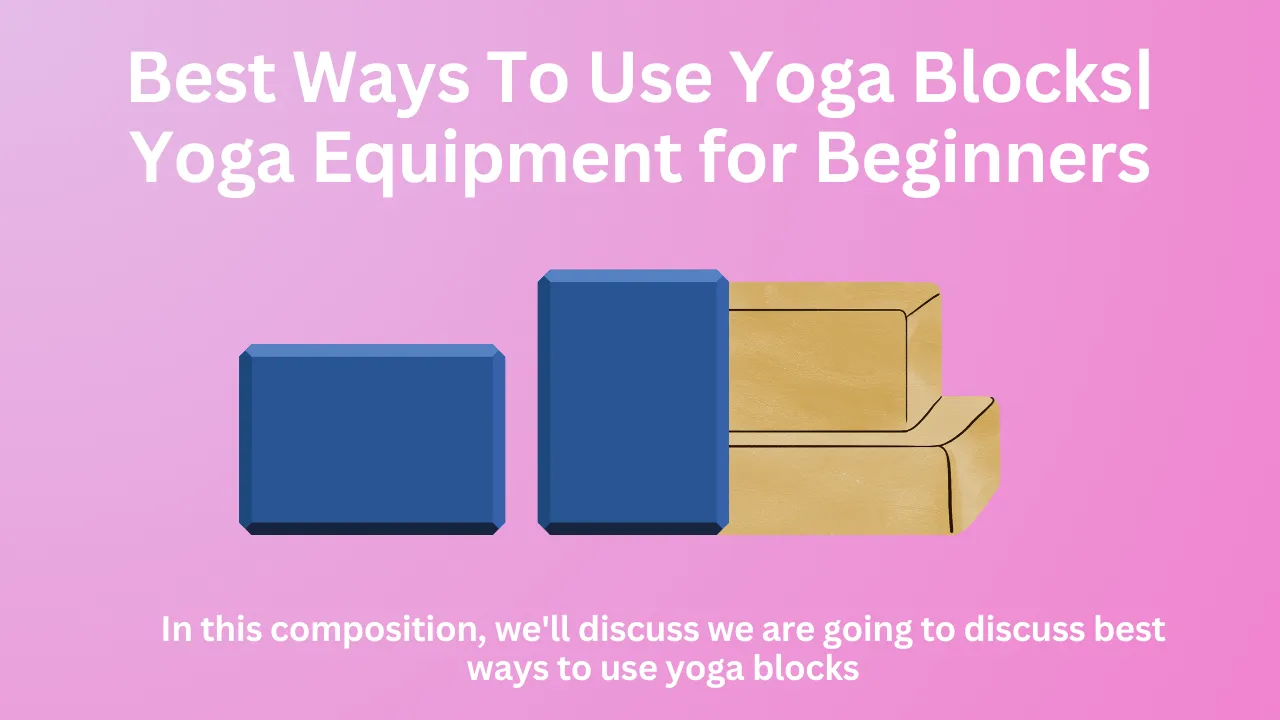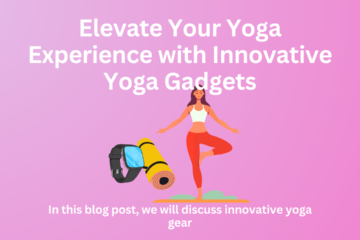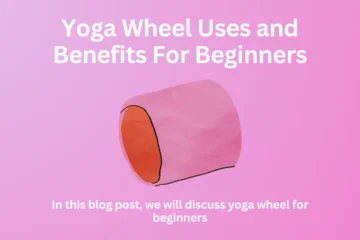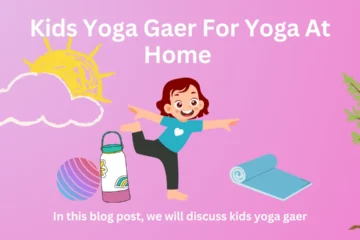Best Ways To Use Yoga Blocks| Yoga Equipment for Beginners

For good reason, yoga blocks, also known as bricks, are by far the most often used prop in practice. With a block, you may adjust or enhance any yoga stance, which makes it the most useful tool available. We’re dissecting 101 ways to utilize blocks to improve your technique in this article. Greetings if you’re new to the prop party! Later on, your body will be grateful.
There are many types of yoga blocks, such as foam, cork, and wood. Because foam blocks are pliable and lightweight, carrying them to class or the gym is simple. They are cozy for supporting delicate body regions and for restorative poses. They may not provide adequate stability, however, in positions where you have to lean your weight on the blocks.
Yoga Block Beginners Guide
Since cork blocks are heavier than foam, they provide more stability while standing. They’re an excellent option for novices since they’re durable and kind to the environment. These days, wooden blocks are uncommon. They are heavy, and when they sweat, they might become slippery. For this reason, novices should not use them. Blocks made of bamboo might be an alternative.
Beginners have a particular choice when it comes to choosing between foam and cork. It is also advised to get a set of two blocks so that you may use them in symmetrical positions. 22 x 12 x 7.5 cm is the most popular and adaptable size, and it may be utilized in three different configurations: lowest, medium, and tallest. Here’s how to incorporate yoga blocks into your poses.
For Whom Are Yoga Blocks Appropriate?
You may be shocked to hear that yoga with blocks is appropriate for practitioners of all skill levels if you’ve previously believed that they’re only for newcomers. Props would naturally be varied for each body type since yoga poses vary in appearance and feel.
What Advantages Do Blocks Offer?
Simply put, yoga blocks are tools to assist you in achieving the right posture and engagement. Blocks are only instruments. We may use these techniques in our yoga practice in three different ways:
- To Assist
- To Strengthen
- To Stretch
Although most people think of blocks as a technique to make postures more accessible, there are just as many ways to use them to advance and enhance your practice. A block should enable you to approach your edge securely when used properly.
How Can I Determine the Ideal Height?
- The three distinct heights of blocks—we’ll refer to them as low, middle, and high—contribute to their adaptability.
- Blocks on the lowest setting are much more stable than blocks on the maximum level due to surface area. We shall suggest block heights for certain workouts and postures in this article.
- Start at the most accessible height and work your way up if you’re not sure which height is best for you. If breathing becomes difficult, you could have pushed yourself too far.
How to Use Yoga Blocks?
When yoga blocks were first introduced in the 1970s, their most common material was wood. Although wooden blocks are still created today, foam or cork are the materials used in the majority of yoga blocks.
Beginners and anybody wishing to practice restorative postures may find foam blocks to be quite helpful.
Foam blocks are ideal if you often find yourself reaching for a yoga block to support your forehead, forearms, or chest during deep stretches. Compared to alternatives made of firmer cork, they provide more comfort and cushioning. Foam blocks are used in most yoga studios since they are lightweight and adaptable.
Manduka’s Recycled Foam Yoga Block is Favorite
Cork blocks provide you with extra grip and stability. Using a heavier cork block in overhead block holds, drills, and core exercises may be an excellent approach to increasing difficulty for those looking to gain strength. Additionally, cork is the finest material to perform arm balances on blocks. Because cork is a natural substance, cork blocks are environmentally beneficial!
Basic Yoga Block Exercises
- Dog with a downward-facing posture
Under Hands: Reposition your center of gravity so that your hands and wrists are not as stressed. - Underfoot: This position focuses on hip height and stretches your calves and rear of your legs extensively.
- Yoga advice: Place your blocks against a wall or use a yoga towel if your mat is slick.
1. Bridge Pose
Your inner thighs must be strong and energetic for the bridge position. Place a small yoga block between your inner thighs for optimum alignment. First, softly squeeze the block, then elevate your hips. This adjustment will teach good alignment and ease lower back pain.
2. Child’s Position
- Under Seat: Draw the earth in closer to your hips and knees for comfort.
- Stretching your triceps can help you elongate them while also expanding your chest and engaging your shoulders.
3. Alpine Position
- Between Hands: Work your serratus anterior, shoulders, and back muscles to strengthen your arms.
- Stretching your triceps can help you elongate them while also expanding your chest and engaging your shoulders.
- Hugging elbows into sides during a High to Low Plank while engaging the triceps and back muscles is known as Chaturanga Arms.
- Plank Arms: To prepare for plank stance, activate your shoulders.
- Between the Thighs: Activating the inner thighs with a squeezed block supports the lower spine, hips, and pelvis.
4. Chair Position
- Between Hands: Work your serratus anterior, shoulders, and back muscles to strengthen your arms.
- Between Thighs: The lower back, hips, and pelvis are supported by activating inner thighs.
- It increases difficulty with balance and fortifies the stabilizing muscles in the feet and ankles
5. Consuming Bit
It extends the foot soles and engages the foot and calf stabilizers
- Maintaining Equilibrium Positions
- Tree Position
- Figure Four Standing
- Figure Four folded
- Half-Moon
- Leaning Against the Wall
- Toe Chair
- Toe Hull
- Crescent
13. Tree Position
Engages the thigh, calf, and standing foot stabilizing muscles
14. Figure Four Standing
Provides an additional core challenge by activating the stabilizing muscles in the standing leg and foot.
15. Figure Four Standing
As a pre-posture for the flying squirrel and flying pigeon, it supports the ability to fold forward for greater hip flexibility.
16. Half-Moon
Promotes chest elevation with the obliques and supports upper body stability.
17. Leaning Against the Wall
Assists in activating the stabilizing muscles to maintain the block in place. enables you to locate the exact spot where your hips and feet meet.
18. Chair Position
Raising the heels causes a little forward shift in weight, increasing the difficulty on the quadriceps and calves.
19. Curl and Tuck
This stretches the bottoms of the feet and engages the foot and calf stabilizers.
20. Half Moon in Standing
Pulling on the block will help your shoulders, back, and obliques contract.
- Bends in the back
- Bow on the floor
- Infant Cobra
- Dog with an upward-facing posture
- Pose of Camel
- Bridge Pose with Support
- Supplied Fish Position
- Pose of Fish
- Wheel Position
- Front Arm Rotation
- The Pose of King Arthur
- The Flipped Dog
- Extensive Cobra
- Inverted Crunches
21. Bow Pose on the Floor
- Engages inner thighs to sustain and preserve alignment of the pelvis, hips, and lower spine.
- Promotes raising the chest and using the back muscles to maintain an upright posture.
22. Pose of the Cobra
Promotes the use of light, and high hands to activate the core and raise the sternum.
23. Dog with an upward-facing posture
Equitable distribution of the spine’s curvature is facilitated by vertical space.
24. Pose of Camel
- Maintains core activity during a backbend by engaging the inner thighs and pelvis.
- As a first step toward moving hands down to ankles, this supports a deeper stretch of the spine.
25. Bridge Pose with Support
Provides support for relaxation while allowing the spine to gradually feel extension.
26. Supplied Fish Position
Promotes mild heart opening and provides complete relaxation support
27. Adapted Fish Position
It prevents the chest from sagging and allows the back to be supported in a more profound backbend.
28. Pose of Fish
In this difficult backbend, encourage the rise of the sternum and a deep heart opening with support.
29. Wheel Position
- To avoid grinding into your lower back if your shoulders are stiff, place your hands on blocks for additional lift.
- Placing blocks under your feet might assist you in finding the necessary extension in your legs if you have tight hip flexors or quadriceps.
30. Front Arm Rotation
- Use blocks to get ready to progress into deeper chest holes.
- By distributing the backbend more evenly across your spine, the increased support helps you avoid clenching your lower back or shoulders.
31. Arthur Pose, King
- Beneath the back knee, this position cushions the back knee while bringing the weight a little forward to increase hip flexor extension and decrease strain on the back knee.
32. Untamed thing
Bringing the ground closer gives confidence to progress into a backbend.
33. Extensive Cobra
It engages the back and shoulder muscles, and the block’s weight increases the difficulty of the lift.
34. Inverted Crunches
Increases difficulty by strengthening the upper back.
- Twists
- Forward-Twisting Fold
- Twist of Prayer
- Stretch Your Quads
- Rotate Your Shoulders
- Crescent Turned Around
- Unclosed Twist
- Triangle Rotation
- Half Moon Rotated
- Sugarcane Turned Around
- Simple Twist
35. Forward-Twisting Fold
- Supports maintaining the spine’s length and the chest parallel to the ground.
36. Twist of Prayer
- Block Between Hands: Squeezing the block promotes a deeper twist and fortifies the arms and chest.
- Block Between Thighs: This maintains the stability of the pelvis and lower spine by activating the inner thigh muscles to keep the hips squared during twists.
37. Stretch Your Quads
Raises the chest to facilitate finding the hand-to-footholdhold.
38. Rotate Your Shoulders
Beneath the temple: Permits the head to drop for increased comfort and stability when twisted
39. Crescent Turned Around
- Between elbow and thigh, pressing both your elbow and thigh against the block is necessary to help with balance.
- Increasing the distance between the palms promotes a deeper twist.
40. Unclosed Twist
Promotes a raised chest and elongated back to support the twist
41. Triangle Rotation
It lengthens the spine to provide accessibility to the twist
42. Half Moon Rotated
Properly aligns the chest with the ground by lengthening the spine and supporting balance and stability in the lower leg.
43. Sugarcane Turned Around
It increases balance difficulty while strengthening the hamstring and glute of the raised leg.
44. Simple Twist
Provides more comfort and stability for a mild twist
- Core Exercises
- Grab and Squeeze
- Cycles
- Lower Leg
- Minimal Boat Holds
- Twists in Russian
- Boat Position
- Threads on Side Planks
- Tall Plank
- Pulses with Split Legs
- Switches for Blocks
- Pickers of cherries
45. Grab and Squeeze
- The intersection of the Elbow and Thigh
- Place one block on the same side between your elbow and thigh and push strongly in both directions.
- Lift your chest each time you crunch by extending and contracting your opposite arm and leg.
- Do 10–20 repetitions on each side.
46. Cycles
- The elbow and opposite thigh blocked
- Place a press block between the opposing thigh and your elbow.
- Raise and lower your opposing leg while maintaining an upright chest.
- Bend your knee for less force.
- Do 10–20 repetitions on each side.
47. Lower Leg
- Block in the Middle of the Thighs Put the block between your shins and thighs.
- Hover your legs above the ground with your hands at your sides or behind your head, then gently drop them back up.
- Do 15–30 repetitions in total.
48. Boat Holding Low
In between hands, block squeezes the block between your hands while lying on your back. To stimulate your belly, press your lower back into the ground and raise your hands and feet off the floor. 3–5 breaths should be held.
49. Twists in Russian
- In between hands, block squeeze a block between your hands while in a boat stance.
- Bend your chest slightly to the side and begin to rotate from side to side.
- Twist your body sideways with each twist. To increase the intensity, elevate your toes off the floor.
50. Boat Position
- To engage your deep core and inner thighs, squeeze the block. Hold for 15–30 seconds.
- Raise your arms aloft while holding a block between your palms to engage your back, shoulders, and core. 3–5 breaths should be held.
51. Threads on Side Planks
Raise one arm into the air while holding a block in plank position. To raise your hips high and support your core, stack your hips on top of one another. Twist the block from your ribs down underneath your torso and back up to the sky.
52. Pose with Planks
Place your hips over your knees and your shoulders over your wrists to form a block between your thighs. To engage your inner thighs and stabilize your pelvis and core, squeeze the block in the space between your thighs.
53. Pulses with Split Legs
To hover above the ground, extend one leg forward and one leg upward. Reach your arms beyond your upper leg while holding your block, being sure to squeeze it to avoid squeezing your hamstring. Maintain an elevated chest and an elevated pulse. Do 10–20 repetitions on each side.
54. Switches for Blocks
To Do: Extend your legs and lay on your back with your arms above. Initially, place a brick between your palms. Raise your chest, arms, and legs, then move the block to fall between your feet. Lower the block gradually to hover, then raise it back up and return it to your hands.
55. Swimmers with Block Threads
Raise your chest, scissor your legs, and move the block from hand to hand under your thighs.
56. Pickers of Cherries
Maintain stability in your hips by balancing the block on your feet. Elevate your torso as high off the ground as possible and tap your opposing foot with one hand at a time.
- Openers of the Hips
- The Runner’s Lunge
- Snake Position
- Lunge to the Side
- The Twisted Side Lunge
- Figure Four Standing
- Fold Figure Four
- Partial Pigeon
- Butterfly
- Pose of Deer
- The Yogi Squat
- Two-Pigeon
- Angle of Recline of Bound
- Vibrant Warrior
57. The Runner’s Lunge
To make the stance more approachable, move the ground closer.
58. Snake Position
It provides support instead of forcing your back leg up in a classic lizard stance, which deepens the pose by raising the back leg.
59. Lunge to the Side
It provides stability if the heel does not touch the ground completely, or fortifies the arch of the foot and calf if the heel descends naturally.
60. The Twisted Side Lunge
Promotes a longer spine, a lifted chest, and an open twist
61. Partial Pigeon
Offers assistance if the hip is raised off the ground or if lowering into the hip results in knee discomfort.
62. Butterfly
- It assists in a more gradual opening if the inner thighs or groin seem to be overextended during a proper butterfly pose.
- It enables the upper torso to completely extend and unwind in the fold.
63. Pose of Deer
Draws the earth in closer so that you may fold with stability.
64. The Yogi Squat
Supports hips to provide accessibility to the posture
65. Two-Pigeon
- If your knees don’t naturally come to rest on each other, the under-knee posture helps you discover the right alignment and support while also making the pose more accessible.
- Draws the ground in closer to make the fold easier to reach.
66. Angle of Recline of Bound
- It prevents overextension by allowing the inner thighs to relax.
- Extends the groin and inner thigh stretches.
67. Vibrant Warrior
By placing your thigh on support, you may keep your hips up.
- Folds & Hamstrings
- Mood Swing
- Broad-Legged Forward Fold
- Folding Forward While Seated
- Butterfly
- Splits in Half
- The Pyramid Position
- Splits in Standing
68. Mood Swing
It provides more room for forward motion and enhances the mind-body connection to the bottoms of your feet.
69. Broad-Legged Forward Fold
It provides more room for forward motion and enhances the mind-body connection to the bottoms of your feet.
70. Folding Forward While Seated
- Raising the hips causes the hamstrings to naturally extend.
- If your hands can stretch beyond the soles of your feet, this will provide support for a deeper fold.
71. Splits in Half
Draws the ground in closer so that the spine may stretch further.
72. The Pyramid Position
Draws the earth in closer so that the spine may be longer.
Postures of Surrender
- Toe Hull
- Simple Seat
- Savasana
Conclusion
Using yoga blocks may help you deepen your practice and enhance your entire experience, whether you need to adjust a posture to accommodate an injury, increase the intensity of your practice, or just discover a more comfortable version of a pose.
You may create a secure and encouraging space in your yoga practice where you can push yourself and advance your skills by introducing blockages. The advantages of using yoga blocks in your practice are end-less since there are so many diverse applications for them. For beginner’s guidelines, I will be here for your help.



0 Comments